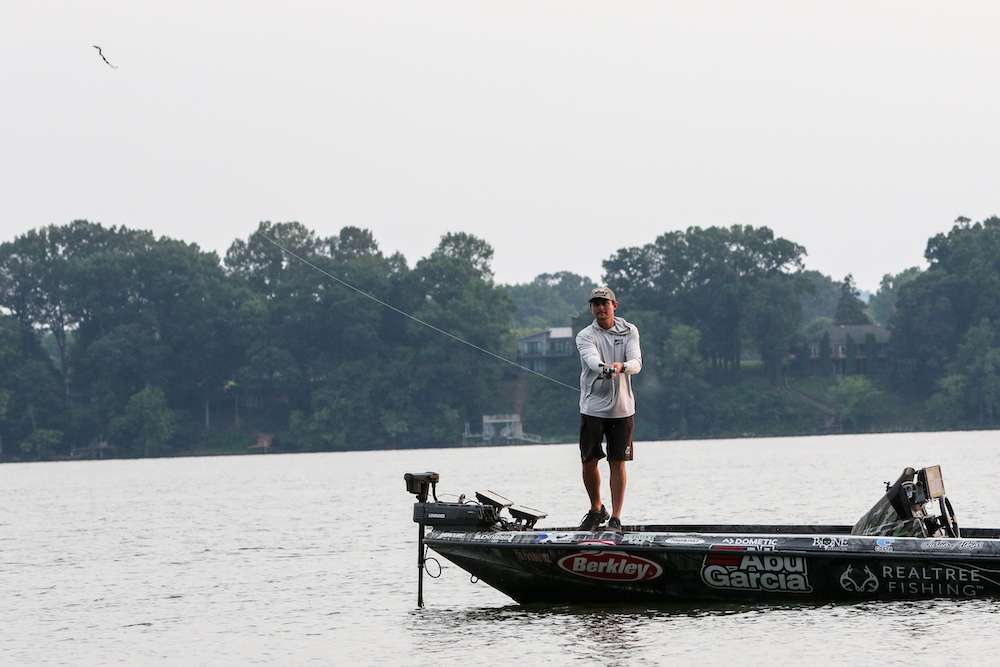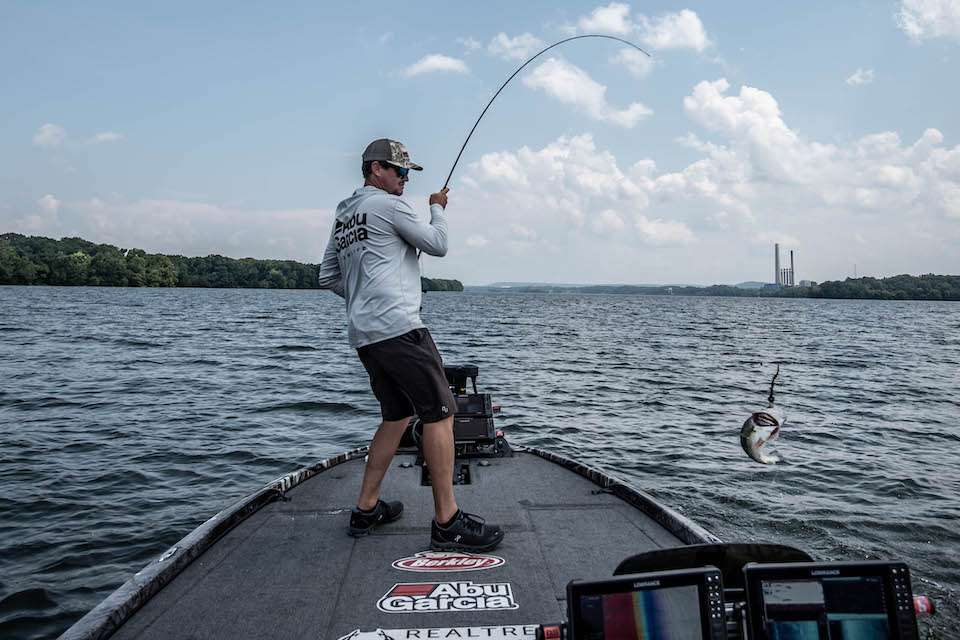
While Geoffrey Chaucer actually told of tragically-fated lovers in his famous poem “Troilus and Criseyde,” summertime bass fisherman probably hear a familiar sentiment in his verse that spawned the fatalistic phrase: “All good things must come to an end.”
Fact is, while the early postspawn offers opportunity galore where you’re catchin’ the fire out of ‘em on crankbaits football jigs and maybe a hair jig, that deal’s like sand in the hourglass. By midsummer, the offshore structure, from traditional Tennessee River ledges to humps, bars and rockpiles can become increasingly stingy.
When it’s good it’s good, but when the fish aren’t having it, you can be in for one frustrating day — unless you master the adjustments.
The turnoffs
Lulls are part of fishing, but across the board, Texas Elite Keith Combs points to fishing pressure as the most common cause of longterm shut downs. Too many boats idling over the schools, ping after electronic ping and a lot of sore lips can give even the hungriest fish a case of lockjaw.
Similarly, Combs finds that even pleasure boat pressure can irritate the offshore fish enough to disrupt a school. Also, Justin Atkins notes that a summer thermocline can bust up the offshore schools and send the fish looking for cozier digs.
“These things will cause some of the fish to want to live in untouched places like the tops of timber, the tops of brush piles, places where they can get out of that thermocline or away from some of that daily fishing pressure,” Atkins said. “Obviously, that’s what creates a community hole — it’s a place that holds a lot of bass.
“Nowadays, electronics are so good, mapping is so good, so many people are fishing; a lot of these large places that hold a lot of bass get found really quickly. That’s why offshore fishing later in the summer gets tougher — fishing pressure and then the changing of the climate they’re living in.”
Combs adds current flow to the list of bite-squelching factors. “I don’t think it’s a big thing if you’ve (only) had a little bit of current here and there, but if you’ve had a consistent flow and it starts to trickle out, those fish will scatter really bad.”
Even without that invigorating current to shake up the dog days doldrums, Combs watches the horizon for building thunderstorms. He won’t mess around with lightning, but the windy cool down right before the bad stuff hits can trigger stagnant fish.
Find ’em and engage ’em
During the slower times, a few bait strategies will improve your chances of connecting with otherwise irritable fish.
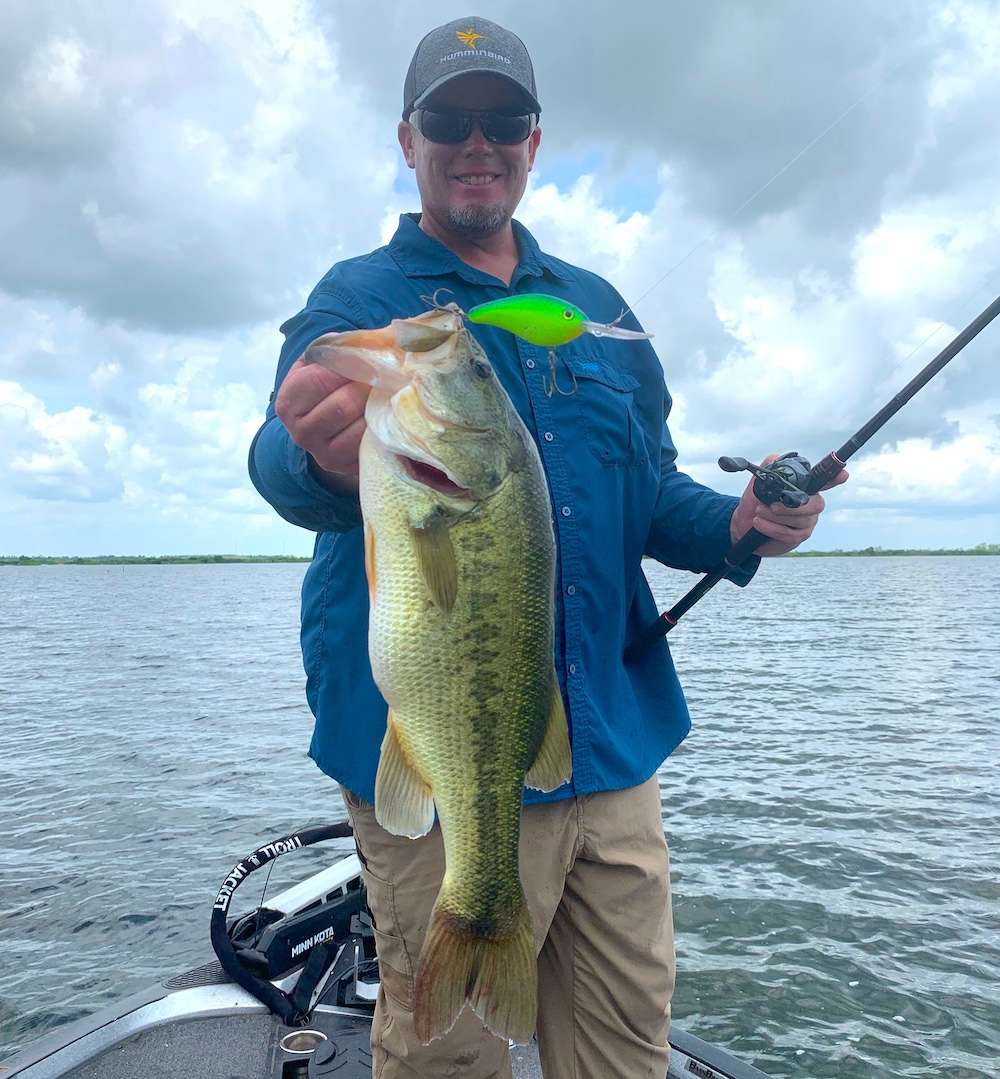
Tone it down: Combs said one of his favorite summer tactics is deep cranking with a Strike King 6XD or 10 XD. When that bite fizzles, his first move is switching to the bait’s silent version.
It’s a drag: Atkins said his No. 1 cure for the summertime slowdown is a Texas-rigged 10-inch Berkley PowerBait Power Worm. The bait’s mouth-pleasing taste definitely helps close the deal, but the appeal starts with the non-intrusive presentation.
“The fish have seen a lot of swimbaits, they’ve seen a lot of crankbaits, a lot of big football jigs; but there’s something about a Power Worm — it always has a little action in it,” Atkins said. “Even when you’re not moving it, when that fish swims down there on that bait and moves the water, that tail’s going to move it looks natural.”
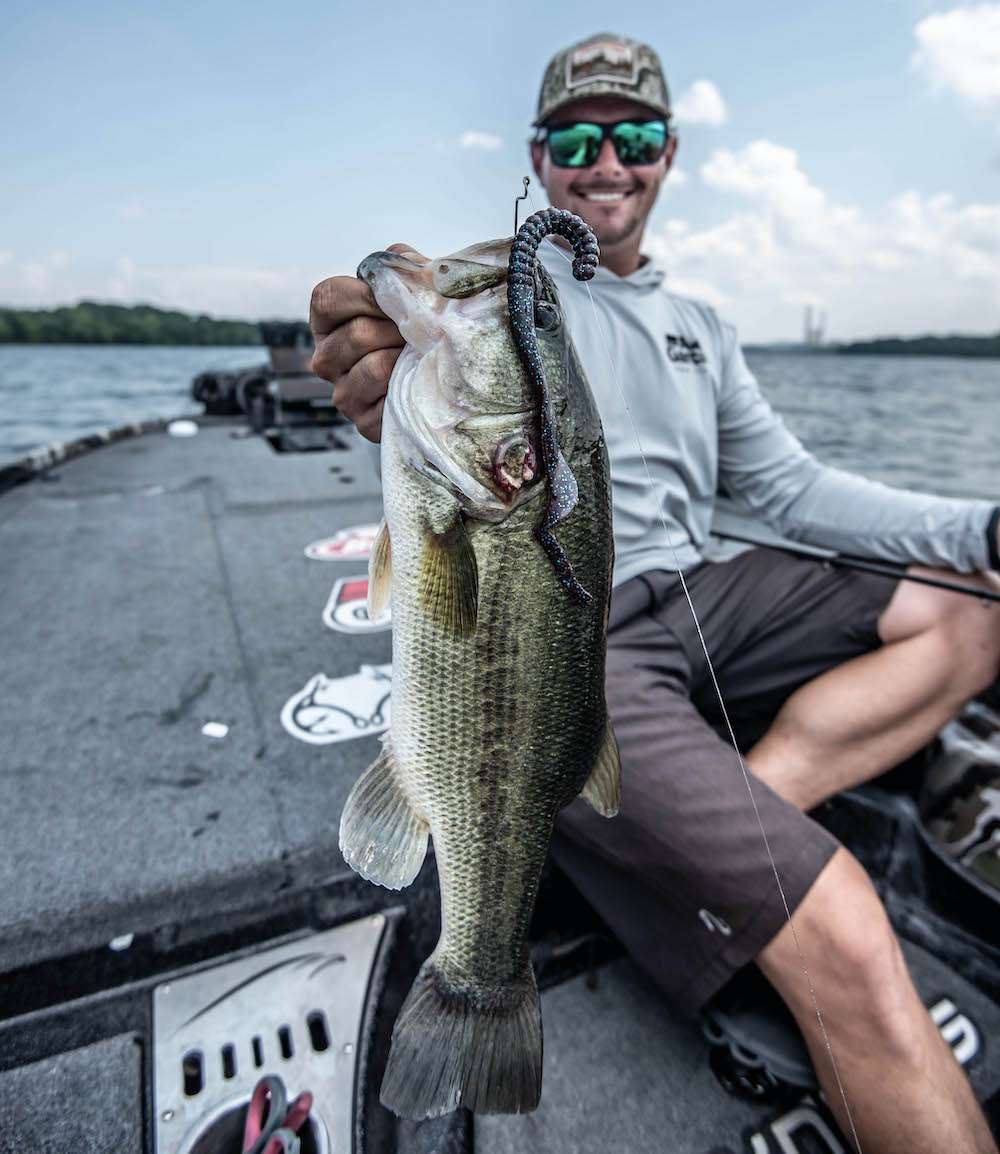
Rigged with a 3/8-ounce weight, this bait’s long on the cast — a point Atkins finds essential to dealing with persnickety fish.
“With a 7-6 rod, I can throw all the line off my (Abu Garcia) Revo STX reel and that allows you to stay off those fish,” he said. “I feel that the very thing that allows you to see those fish is the very thing that spooks them now. They hear that ping, they hear your boat, they hear your trolling motor; they know you’re there.
“I try to stay farther off the fish in a pressure situation and make a long cast to them.”
Combs also likes a Texas rig, but if the fish are really playing hard-to-get, he scales down to a 6-inch Strike King Cut-R Worm. A modest profile with a flanged tail offers an attractive, but easily captured meal.
Salute the swim team: Atkins admits that when a thermocline situation puts fish in the top of timber, that has typically presented a difficult situation to capitalize on. However, forward-facing sonar like his Lowrance Active Target has changed the game.
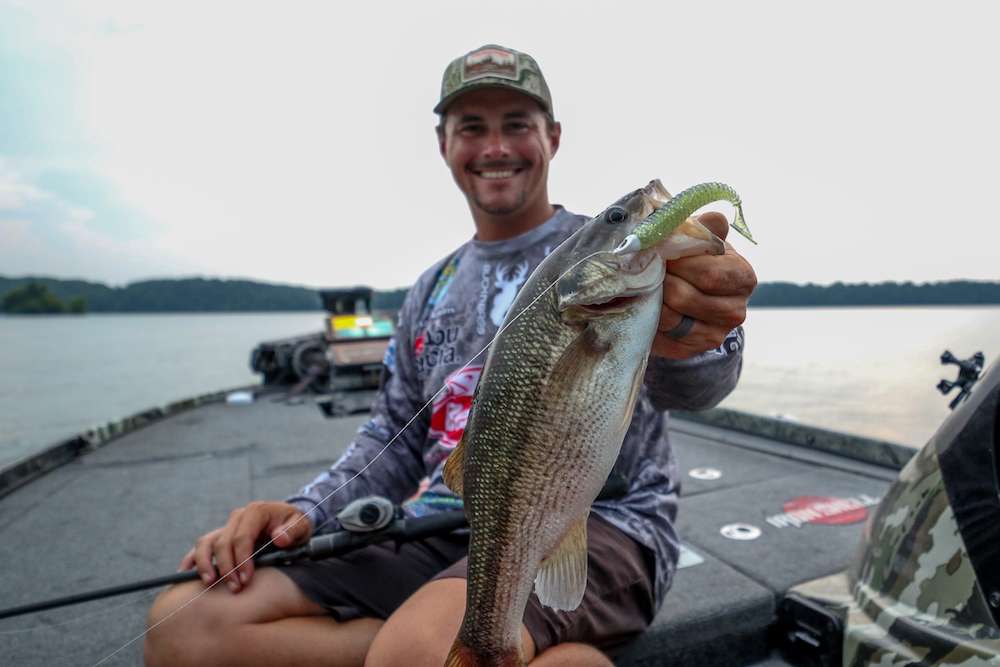
“I’m going to find those fish by finding timber with my SideScan and then I’m going to stand up with my Active Target to look for them,” Atkins said. “Once I find them, a Berkley Power Swimmer on a 1/4- to 3/8-ounce head does a really good job.
“If you don’t have forward-facing sonar, you can count down the bait by knowing your bait’s rate of fall.”
Atkins’ technique tip: Hold the rod tip high and reel just fast enough to feel the bait hitting the top of the timber.
“You want to just barely tick (the timber) because those fish area always going to want to feed up,” he said. “The reason they came up high is because of the thermocline in the lake, so you’re always going to want to keep that bait above them.”
Flash and fall: Atkins also likes a jigging spoon for suspended offshore fish. Positioning over the fish and making vertical presentations can trigger fish that may respond instinctively to the image of a struggling baitfish.
For effective spooning, he wants at least 15 feet between his boat and the timber. However, if he finds fish suspending 10 feet or less below the surface, Atkins said he can often talk them into walking upstairs to hit a Berkley J Walker or Cane Walker topwater bait. Mornings, afternoons and cloudy conditions tend to best fish this plan.
Combs has a different spoon strategy: “I’ll throw the Strike King Sexy Spoon out there and rip it. A lot of times, when they’re not biting, you won’t hook them (on the flutter spoon), but you’ll feel them just pop it.
“They won’t get hooked up, but that’s the time you can pick up another bait and get a little flurry going. I’ll pick up a 1-ounce football jig, and I’ll just pop it just like that spoon. I’ll try to get that school’s attention, but with that jig, they’re more apt to go ahead and take it.”
Closing tips
Combs summarizes with a couple of tactical thoughts.
Line: While he fishes most of his offshore baits on 17- to 20-pound Seaguar InvizX fluorocarbon, a tough bite may find Combs fishing his Cut R Worm on 12- to 15-pound fluoro.
“Just dropping down to lighter line allows the bait to do more things naturally than being drug around on (heavier line),” he said. “That can get ‘em going.”
Relocation strategy: It’s almost unavoidable — busting up a school by hooking a couple good ones and having several of his buddies follow to the boat. Frustrating, but anytime schools fragment, Combs knows this is when his electronics become invaluable.
“This is when I’m really watching my Humminbird 360 and watching where those fish go,” he said. “In the past, a ledge school would bust up and scatter and the first thing I would do is crank up the motor and idle around until I saw little pod of them and immediately fire on those fish.
“I’m always running my 360 offshore, but this is when I’m going to zoom it in and look for where those fish went. If they’re moving, they’re biting, you just have to make that precise cast.”
In this scenario, Combs will isolate his 360’s sonar sweep area so he’s only looking off his bow. Sitting deep and looking shallow, that keeps him focused on the high-value area.
“I’ll keep my range set on 80-90 feet and zoom in once or twice. That gives you a lot of viewing area and you’ll be able to pick up a lot of detail. You’ll see where the fish went and where the shad went.
“If you pull up and crack them and the school is relating to shad, you can kind of determine where those fish are going to reposition based on what the school of shad does. If the shad goes off to suspend out in deep water, those bass will probably get on the outside of that in the deeper water and push them back toward the shallower part of that hump, or whatever you’re fishing.”
